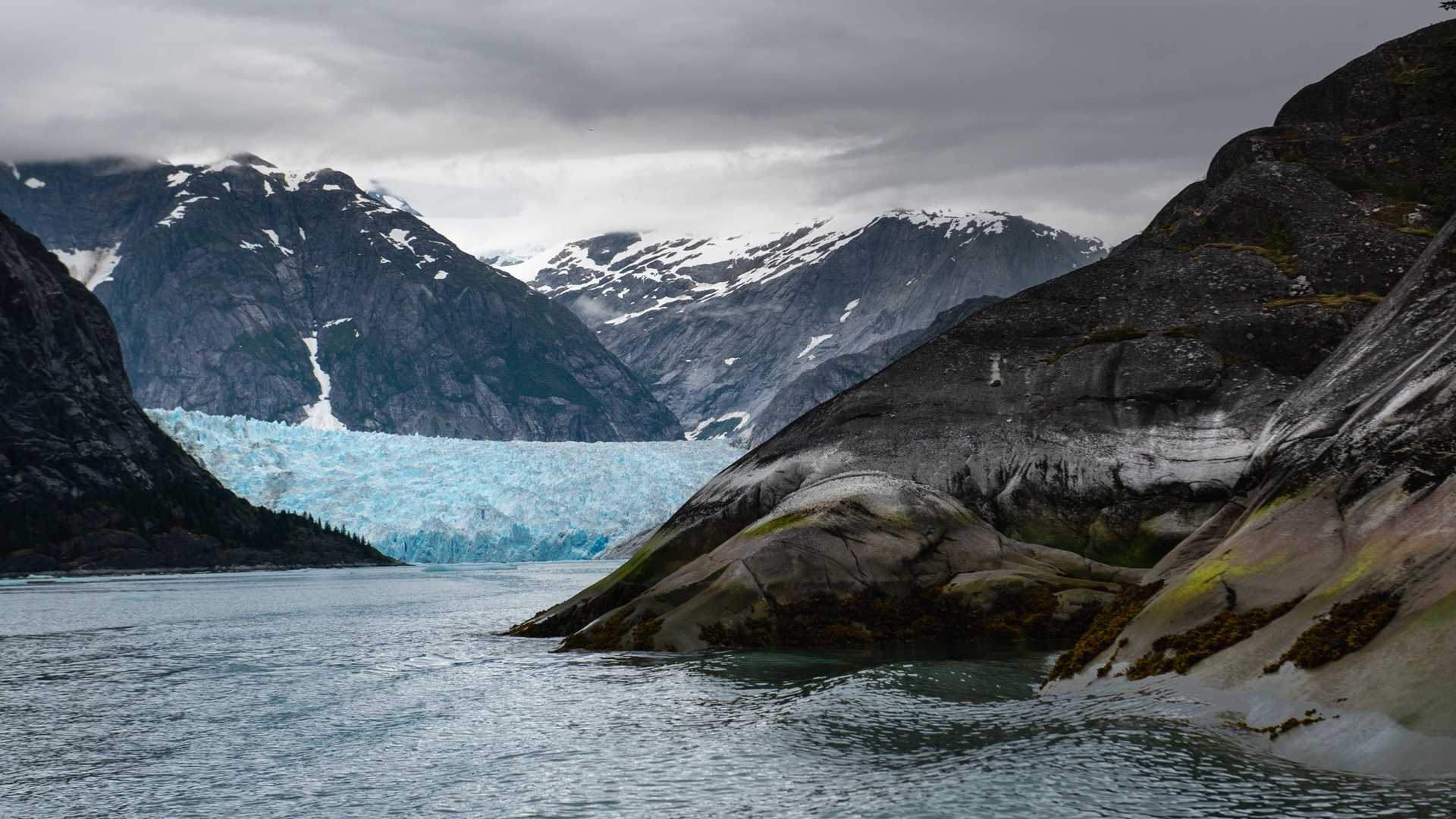The fog hung low over the water this morning. The wind was calm and the water glassy. The foghorn breaking the low hum of the ship’s engines every two minutes. We were on a course toward LeConte Glacier. The terminal moraine of this glacier has created a bar of rocky deposits at the entrance to LeConte Bay sending the water up from 300 feet to a mere 20 feet making navigation difficult for larger ships. With the fog hovering above the water surface, we all wondered how it would impact navigation into the fjord. As luck would have it the fog lifted as we approached the bay, and we were greeted with a calm sea surface speckled with white and blue icebergs.
Our captain, Shawn Nettles navigated the National Geographic Sea Lion further back into the fjord than we could have hoped, allowing the Zodiac cruises to navigate all the way back to the glaciers face. We witnessed several calving events with the resulting loud rumbling noise referred to as white thunder. For many of our guests this was their first look at a glacier and not just any glacier, the southernmost tidewater glacier in the Northern Hemisphere. It was a cold yet peaceful and magical morning.
For the afternoon we headed further north to Cascade Creek for hiking and kayaking. Here the temperate rainforest borders a raging creek full of meltwater from the alpine terrain above. The trail was fringed with Devil’s club, Sitka spruce, Western hemlock and alder. The air was thick with spray from Cascade Creek as it tumbled down a narrow gorge and then over a 30-foot drop to the creek bed below. The trail took us along the margin of the creek to a bridge crossing up steep rock steps and into the heart of the forest. The forest floor was carpeted with moss, lined wild blueberries and magnificent skunk cabbage. Meanwhile, the kayakers explored the intertidal zone along the shore.
We have been excessively lucky with the weather, and today was another wonderful day. Tomorrow we will spend more time with glaciers. Who knows what else the day will bring?









